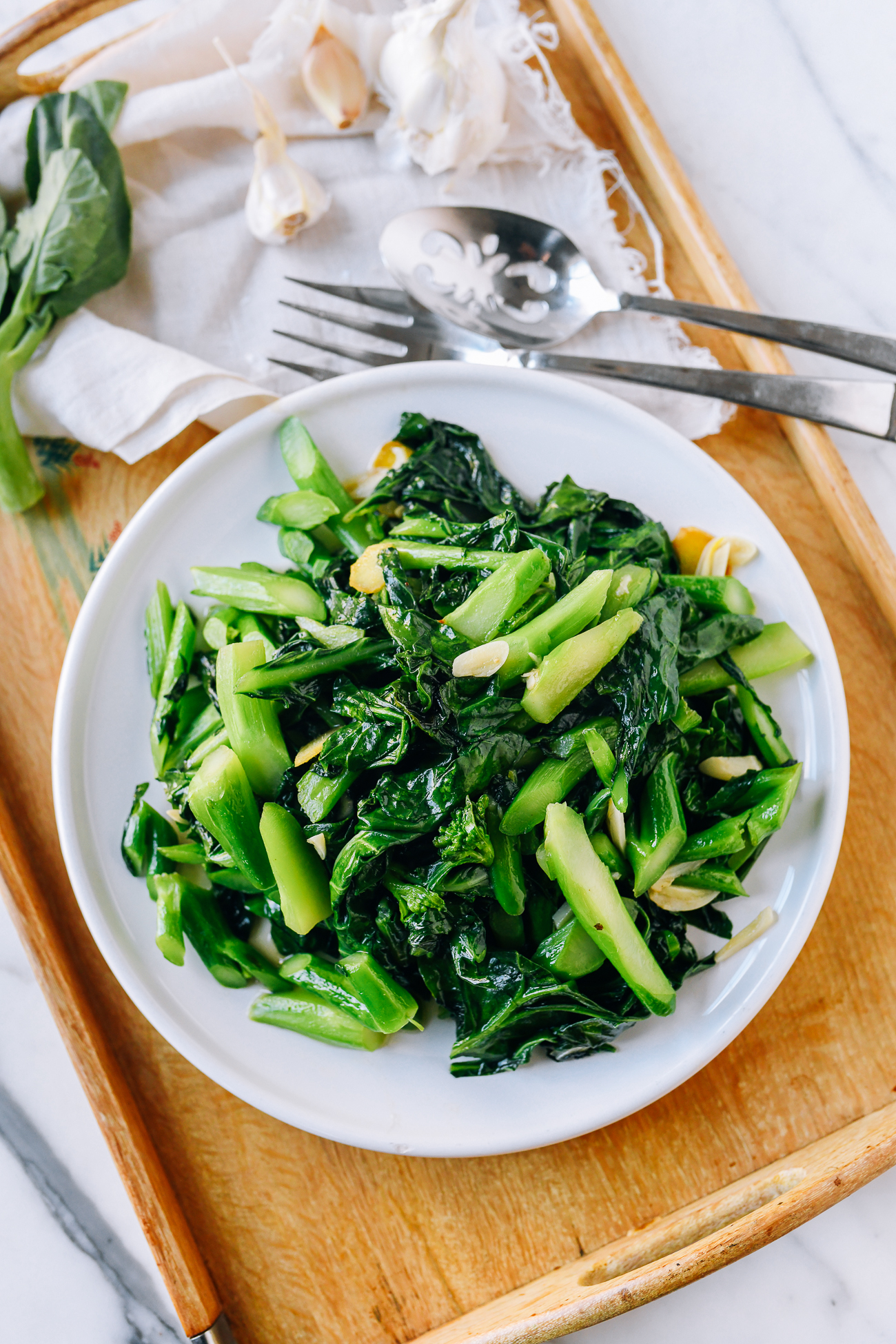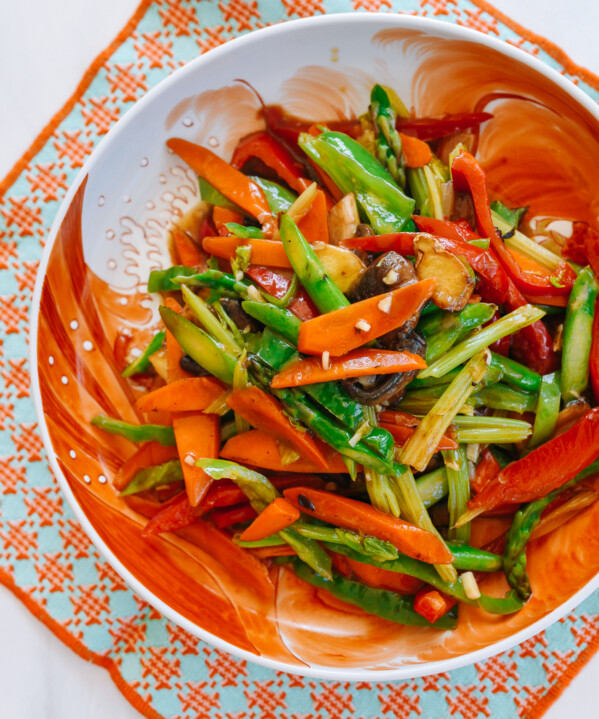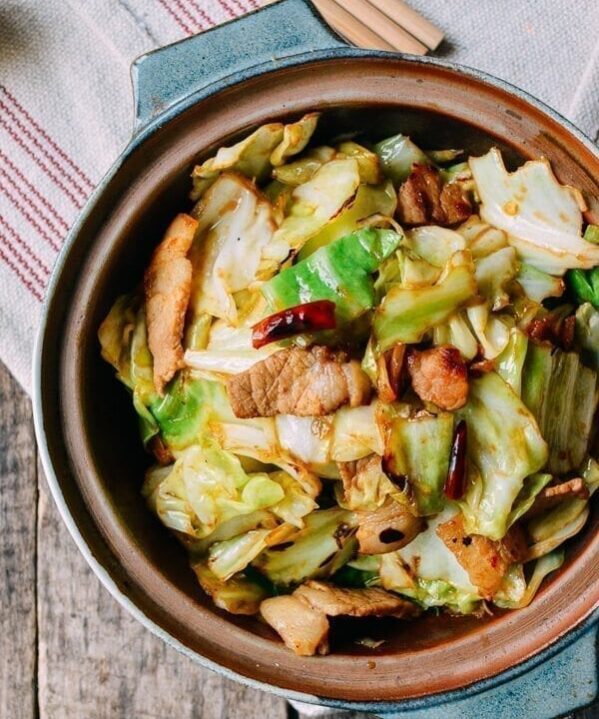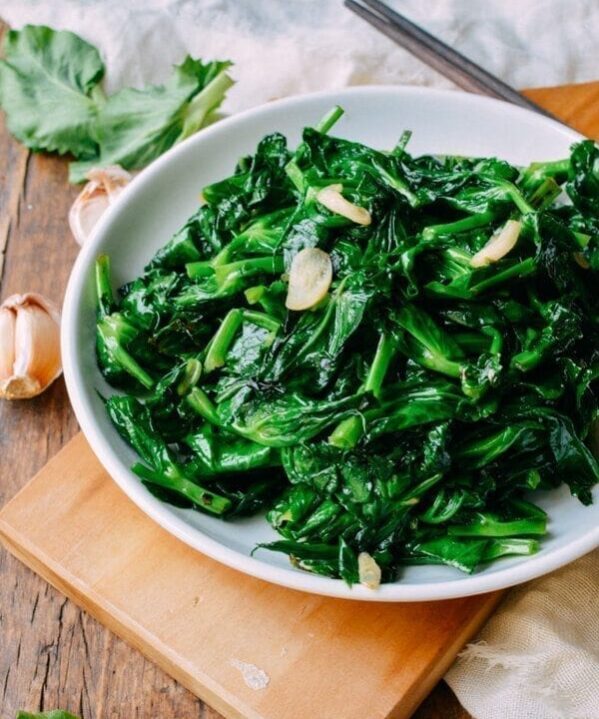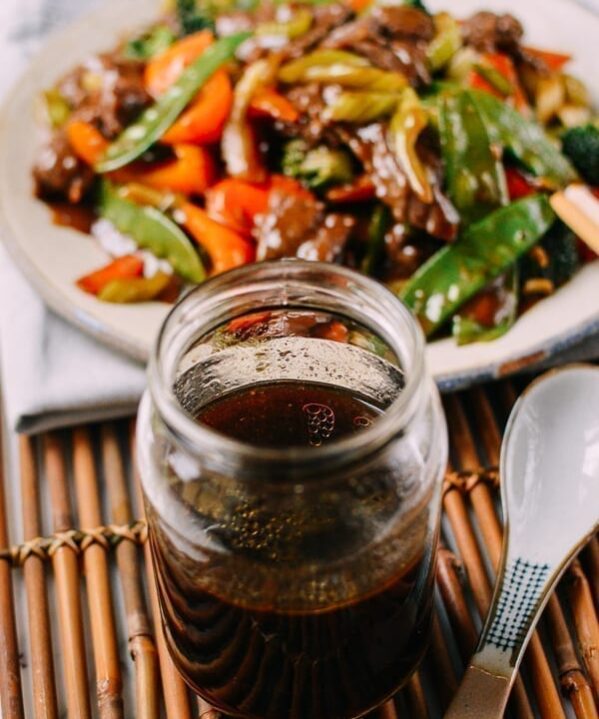Sauteed Chinese Broccoli is a mainstay in our kitchen. It goes with just about everything as a side dish!
To cook it, we use a Cantonese method perfected over the years from watching my parents cook at home and in the family Chinese restaurant.
This version uses clear rice wine, plenty of ginger and garlic, and high heat to build wok hei flavor and amplify the natural flavor of the greens.
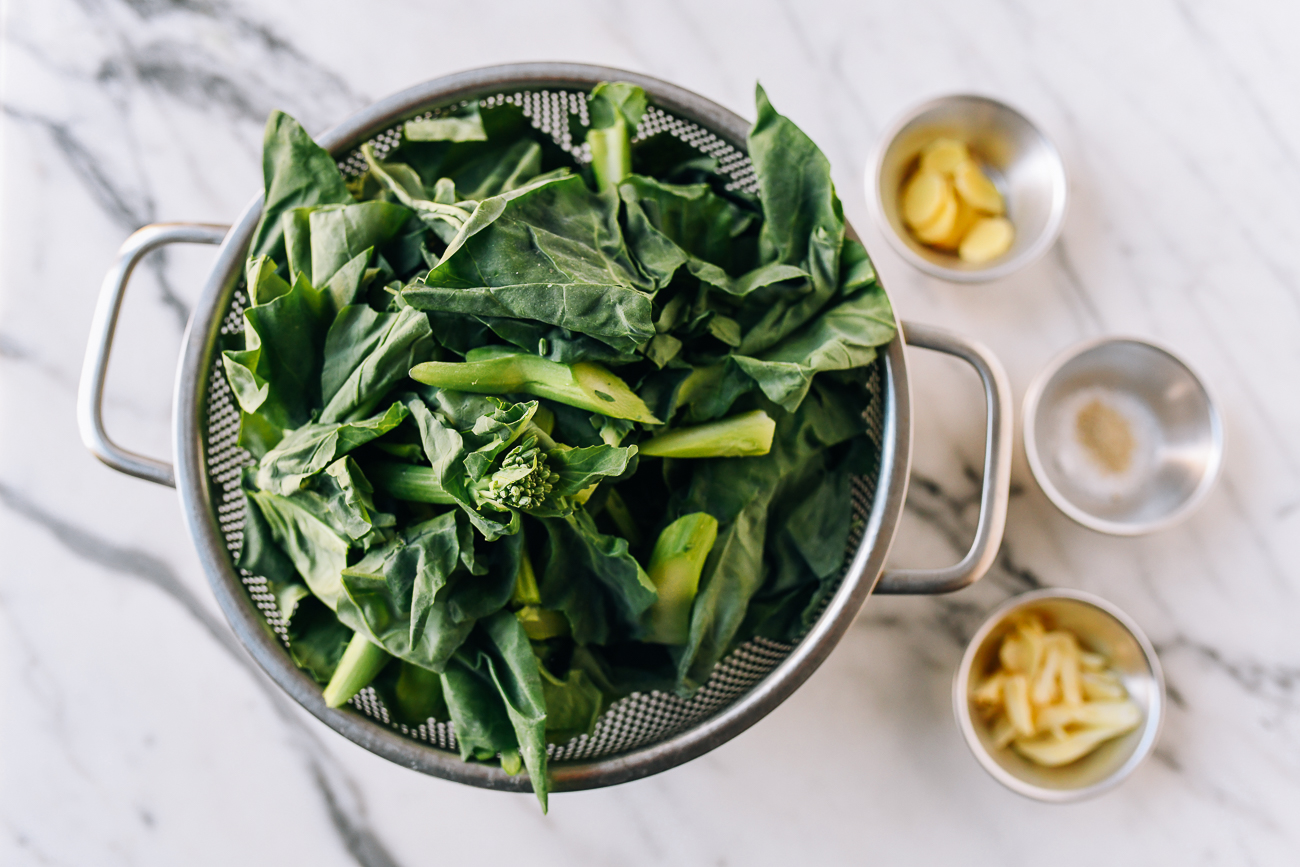
About Chinese Broccoli
Chinese broccoli (芥蓝 – gai lan in Cantonese or jiè lán in Mandarin) is one of the healthiest Chinese leafy greens out there. It’s a cruciferous vegetable, rich in nutrients.
You can find this vegetable with thicker, mature stems as well as younger, more tender stems. Which you use is a matter of personal preference. Just be sure they are bright green and fresh.
For more information on buying and preparing this tasty vegetable, see our complete article on Chinese Broccoli from our Ingredients Glossary.
Make Sure to Thoroughly Clean Leafy Vegetables
I have to mention that washing Chinese leafy green vegetables is a must. They can often be sandy, and like any other vegetables, may be grown with pesticides. Judy always reminds me to triple wash any leafy greens every time I’m making a stir-fry like this.
It might seem excessive, but washing off any residual pesticides and loose dirt or sand just makes good sense and makes for a better eating experience.
You can see more tips and details on our triple wash process on our Chinese leafy greens page.
Is a wok required for stir-frying Chinese vegetables?
A question we frequently get from our readers is if a wok is required. While we provide wok cooking directions, you can use a shallow skillet, cast iron pan, or frying pan for any leafy green vegetables.
One trick to build wok hei in a regular skillet is to get it very hot (this isn’t the time for nonstick pans, which have temperature limits).
If you have a gas burner, tossing the vegetables and shaking them in the pan will help kick up small flecks of grease and wine over the flame, helping to get that coveted wok hei flavor. Just be careful not to let any wine flame up too high, which can be dangerous!
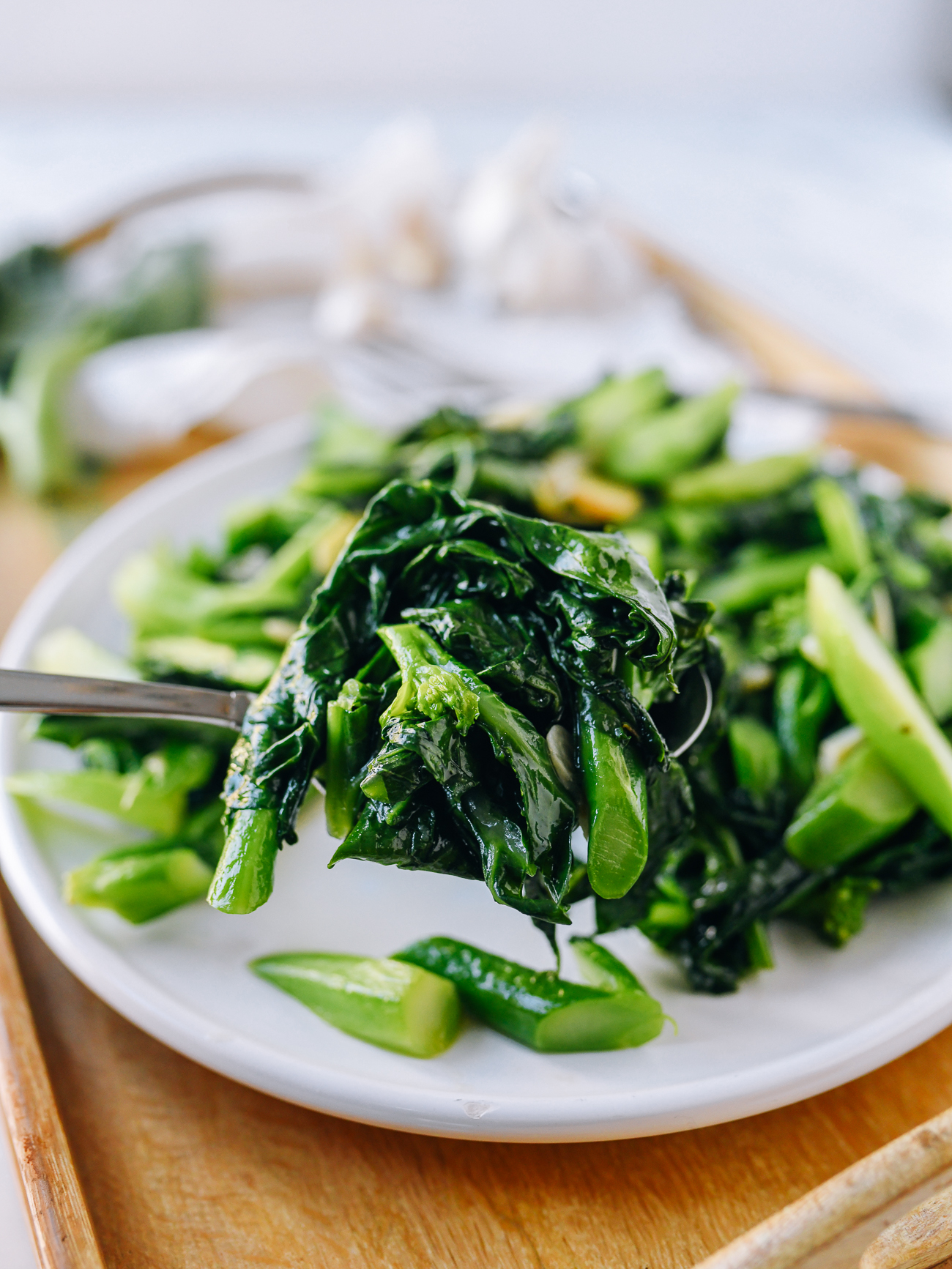
How to Stir-fry Chinese Broccoli: Recipe Instructions
1 tablespoon clear rice wine (can also use Shaoxing wine, though clear rice wine yields a cleaner, milder flavor)
First, prepare the Chinese broccoli. Wash them thoroughly in a big bowl of water, agitating the water and rubbing the leaves to loosen any dirt. Then soak for about 5-10 minutes to allow the dirt/sand to settle at the bottom of the bowl. Repeat twice, for a total of three washings.
Trim away any tough ends. Larger, thicker gai lan stems can get tough at the bottom of the stalk. Trim a ¼-inch off the ends. Then use a paring knife or peeler to remove the outer layer of the bottom stem (which can be too fibrous to eat), similar to what you would do with asparagus.
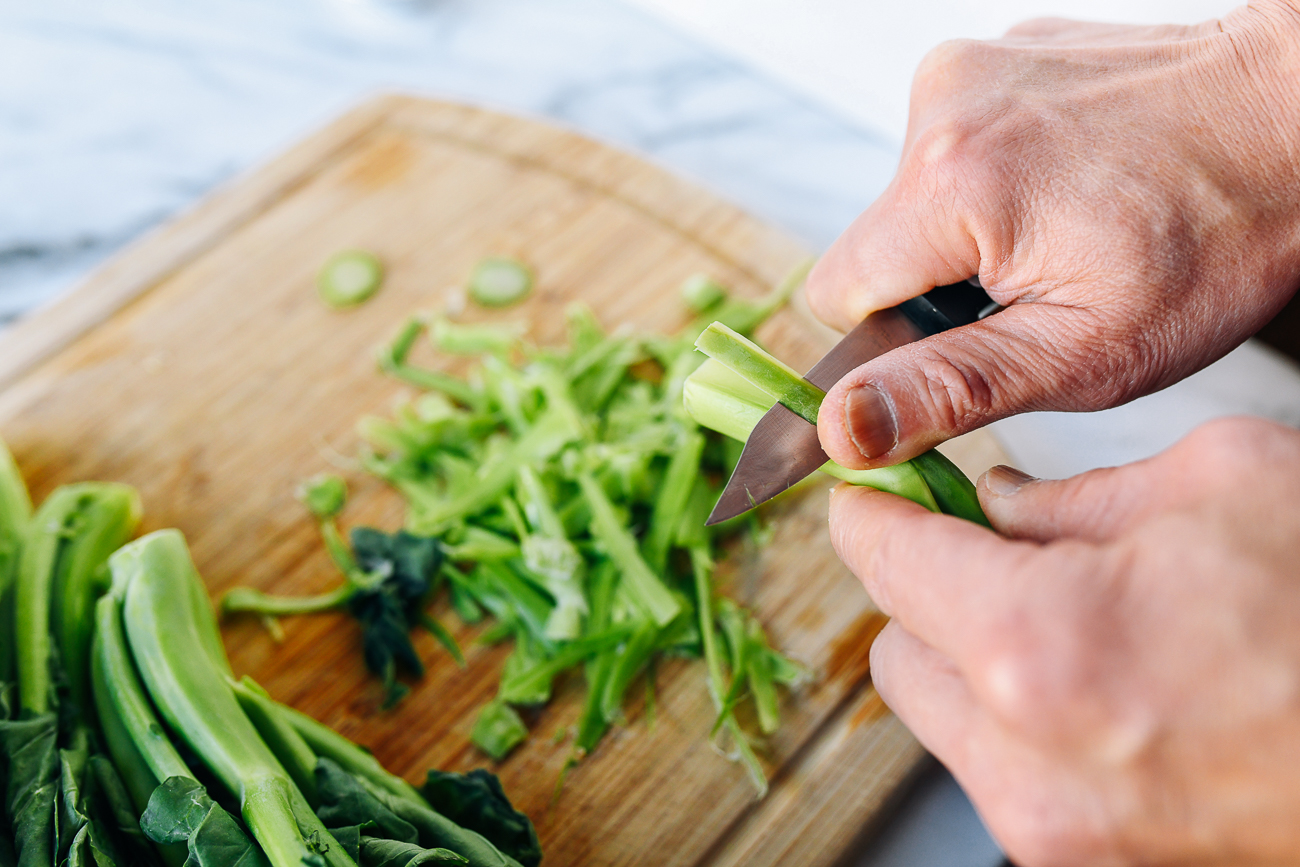
Then cut the stalks into 2 to 2 1/2 inch pieces on a diagonal.
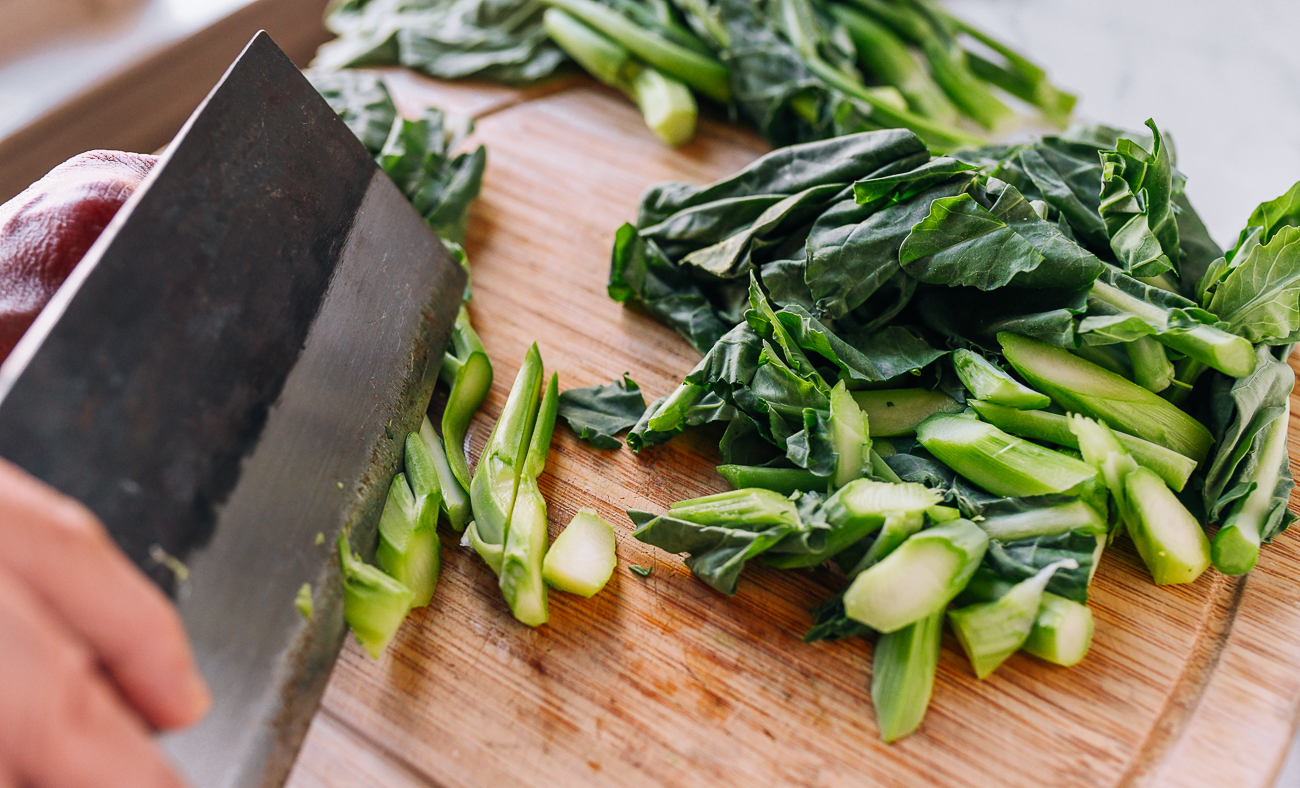
If desired, mix the salt, sugar, white pepper, and msg (if using), so you can add them to the vegetables all at once.
(When you’re stir frying, you want everything close at hand so you can focus on building wok hei.)
Now you’re ready to cook.
First, heat your wok over medium-high until it’s just smoking. Spread the oil around the perimeter of the wok. Then add the ginger slices. Cook for 10-15 seconds, or until they’re fragrant and just starting to caramelize (this will happen very quickly if your heat is high enough).
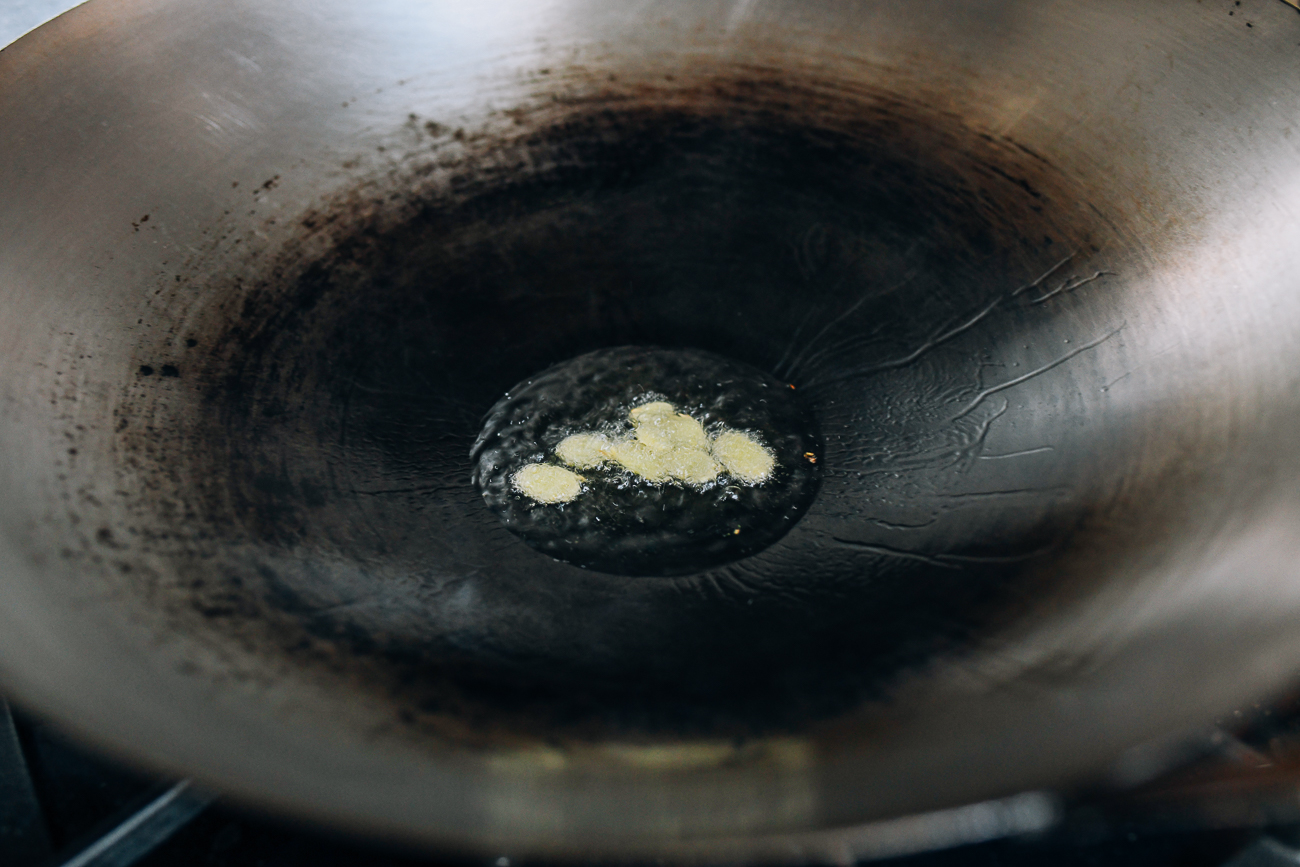
Add the garlic…
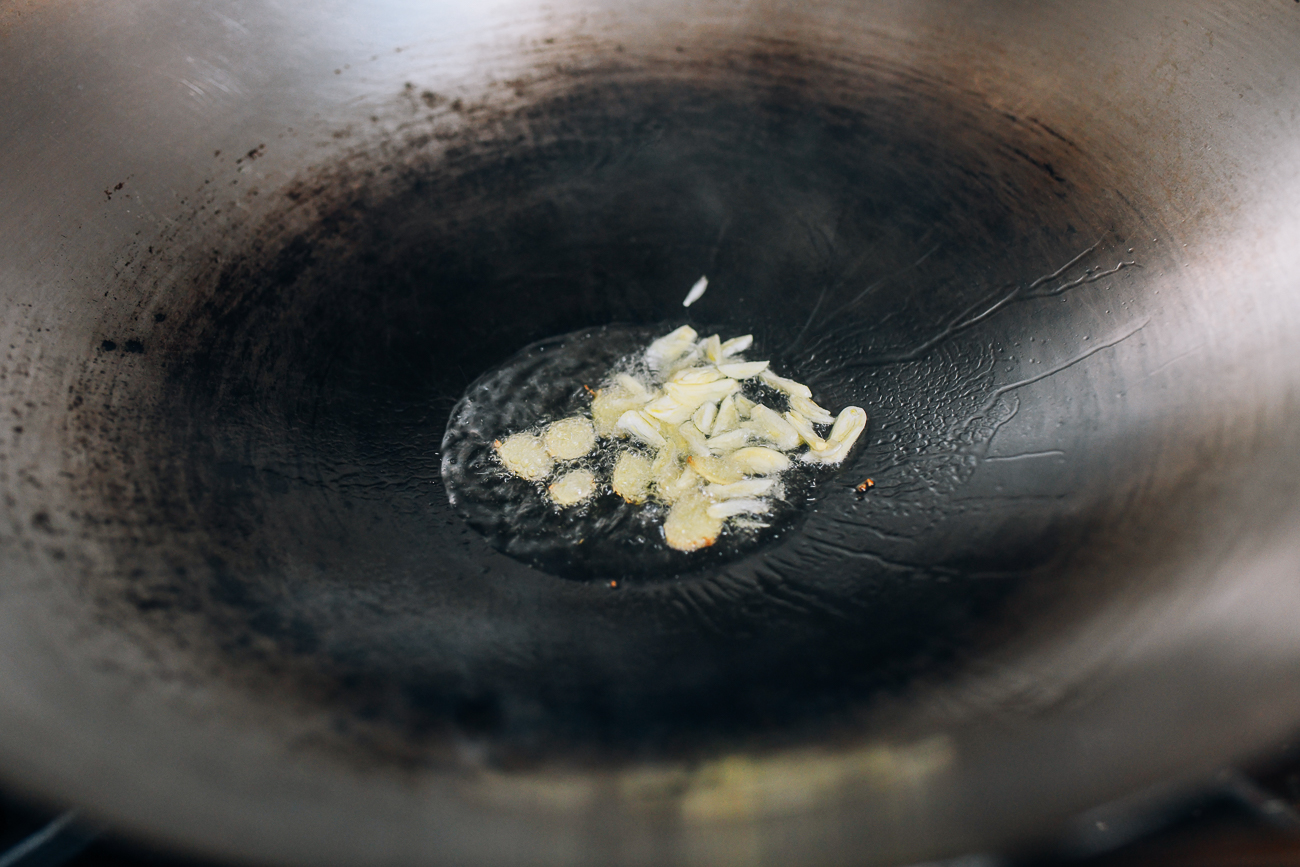
Followed immediately by the Chinese broccoli.
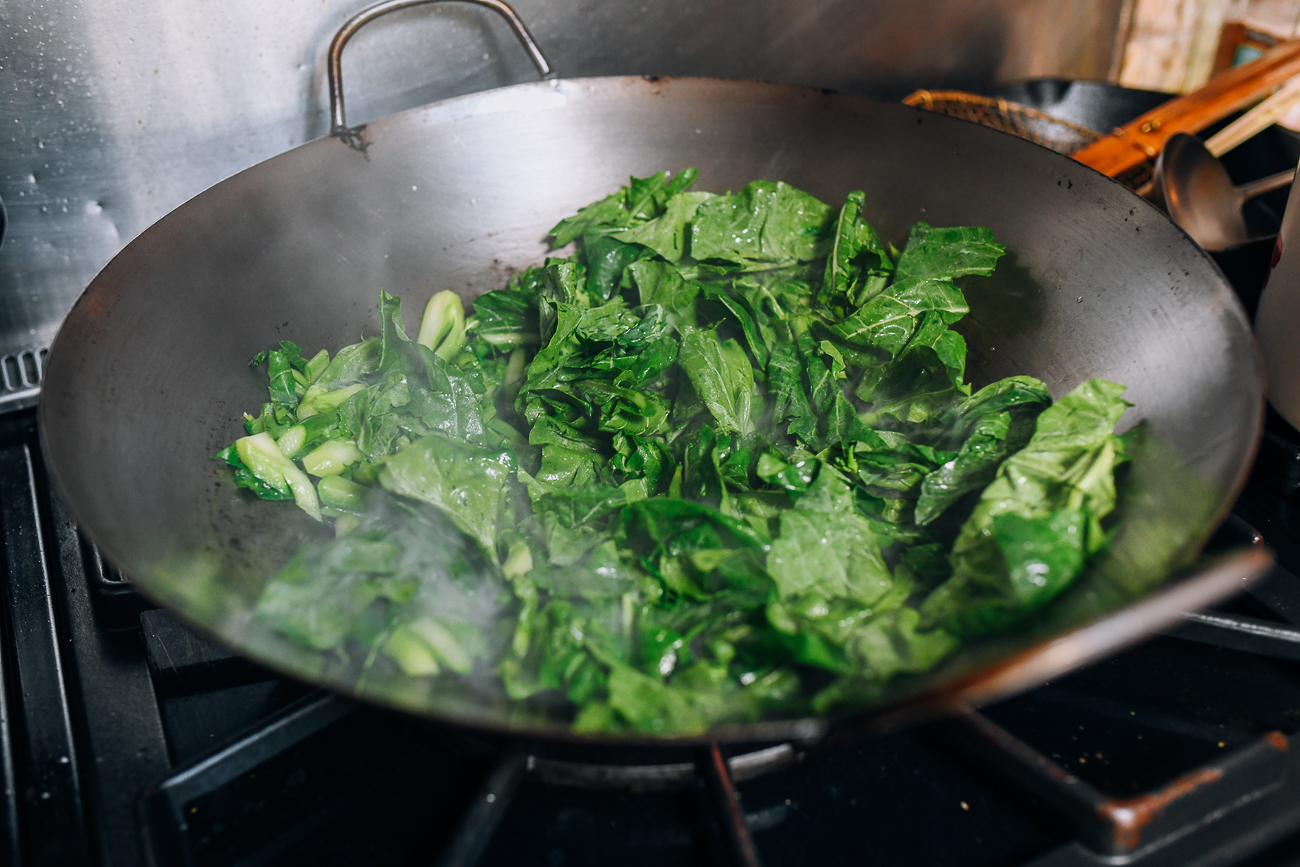
Using a scooping motion, stir-fry with your wok spatula for 10 seconds to coat everything in the oil and evenly distribute the ginger and garlic.
Increase the heat to high. Add the clear rice wine around the perimeter of the wok.
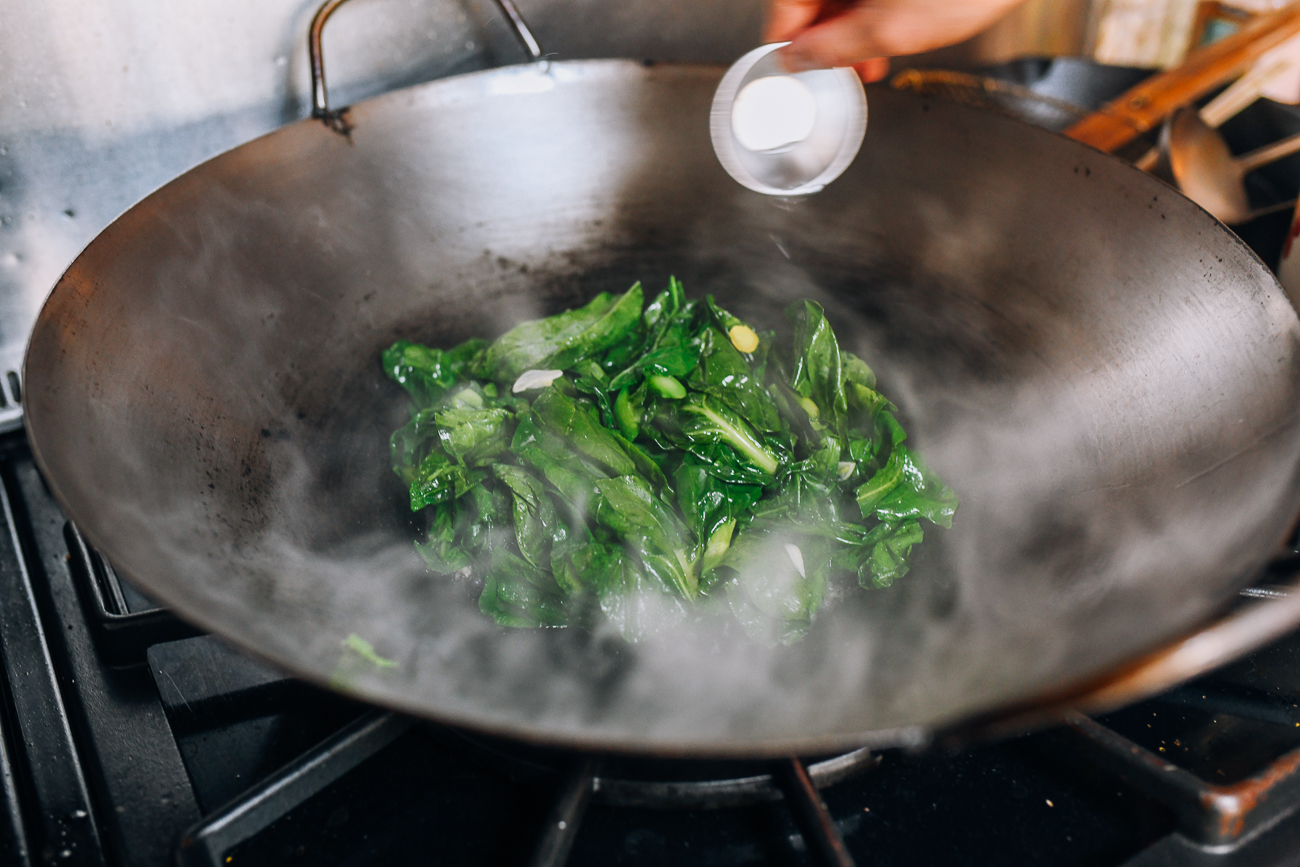
Push all of the Chinese broccoli into the middle of the wok in a small pile.
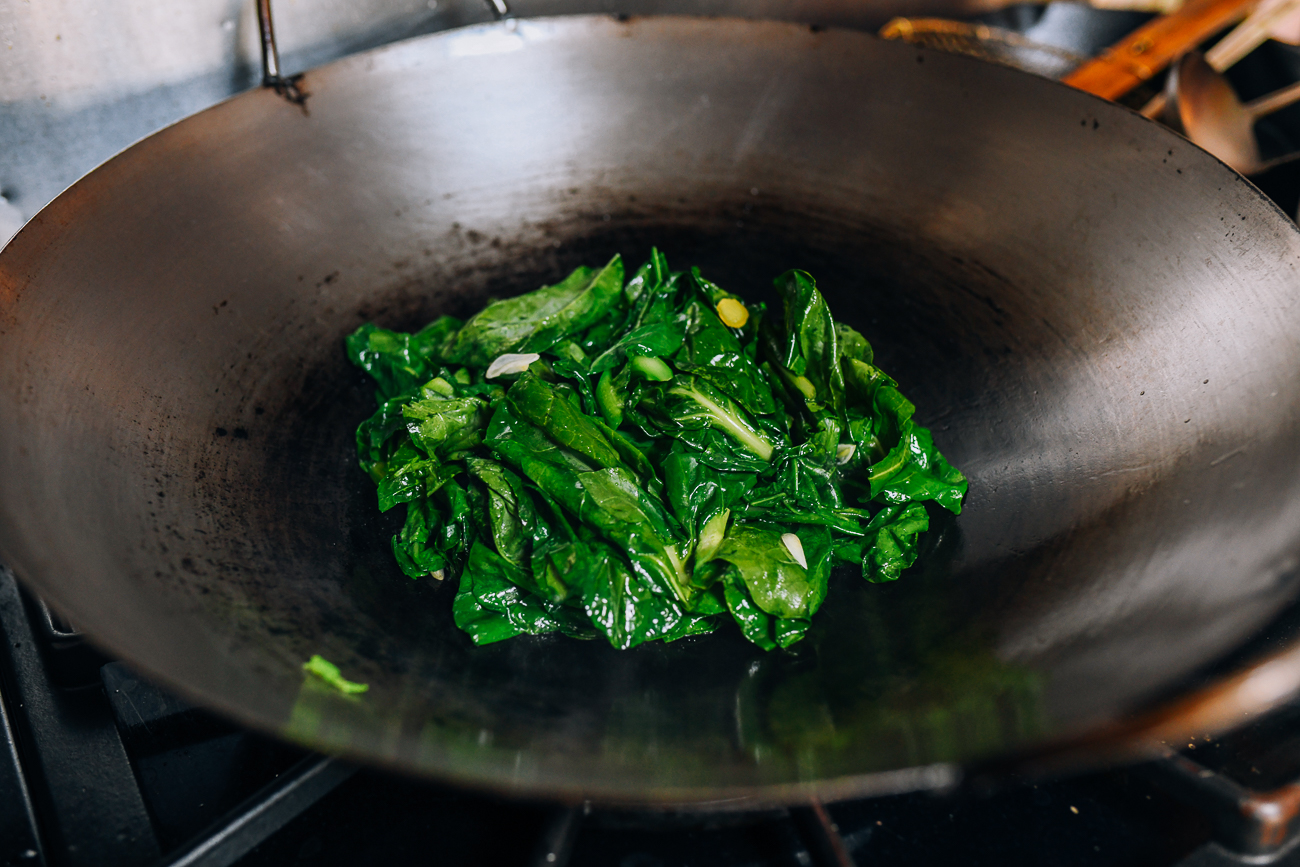
Cover the wok for 1 minute. Steam will cook the vegetables, and the sides of your wok should superheat.
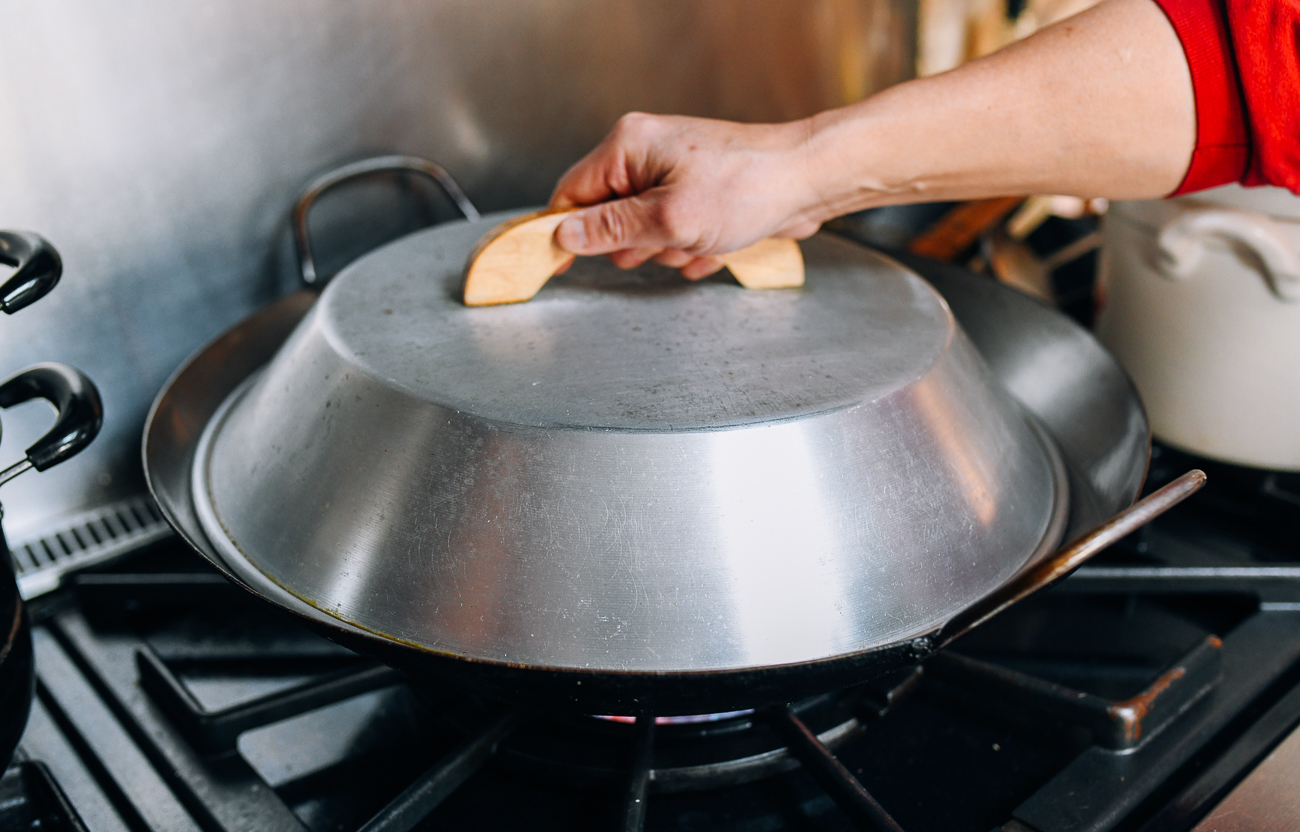
Remove the wok lid.
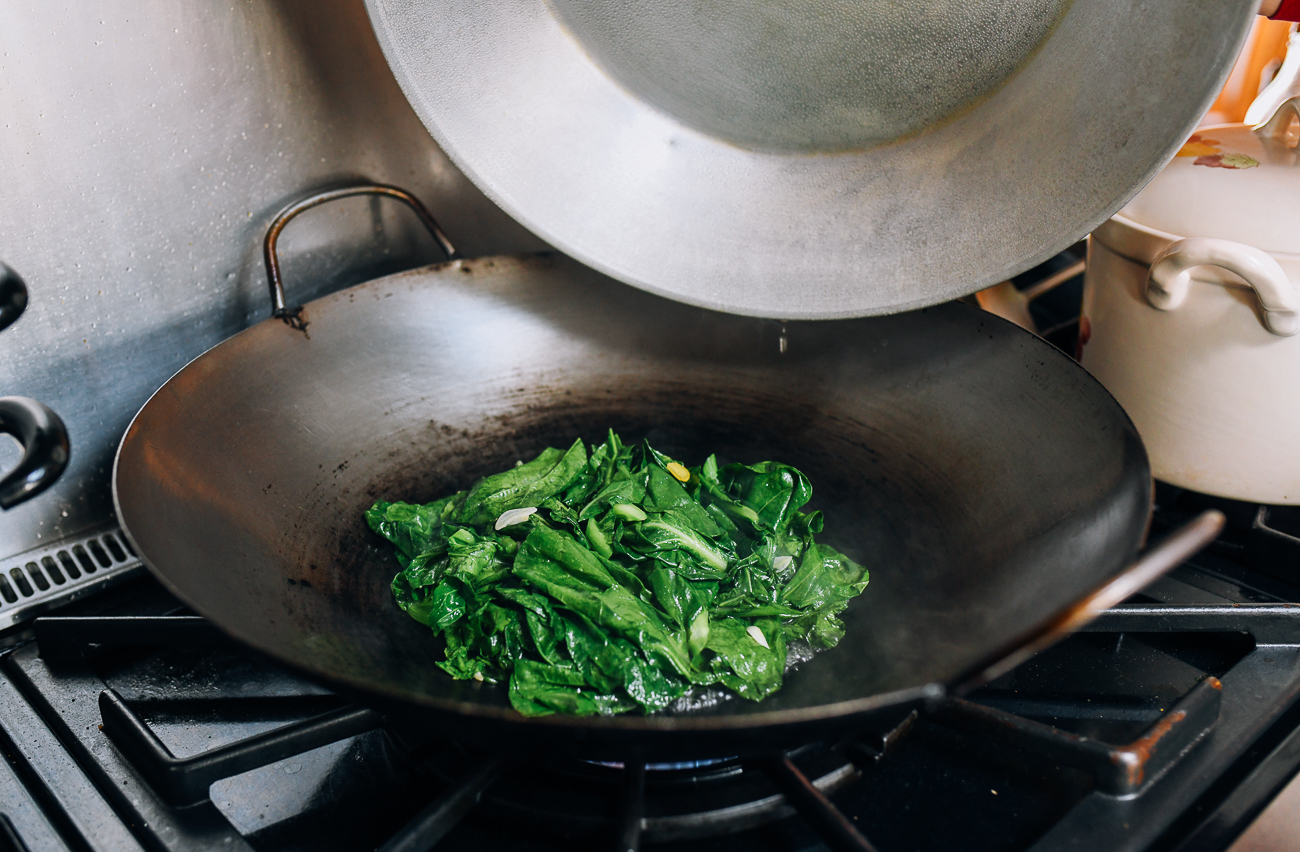
Gripping the wok by the handle, use your spatula to drag the Chinese broccoli around the sides of the wok. This will create a searing, wok hei effect.
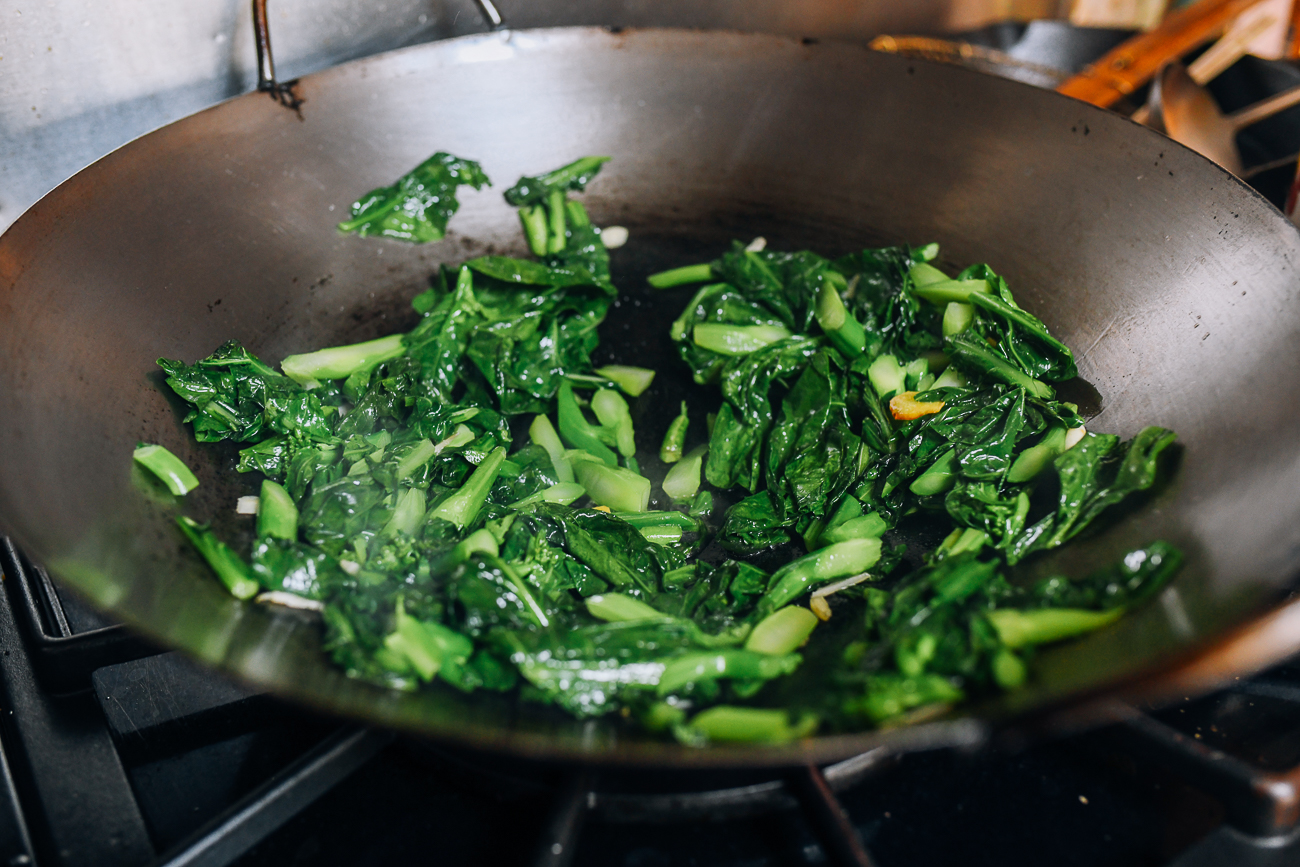
Next, add the salt, sugar, white pepper and msg (if using).
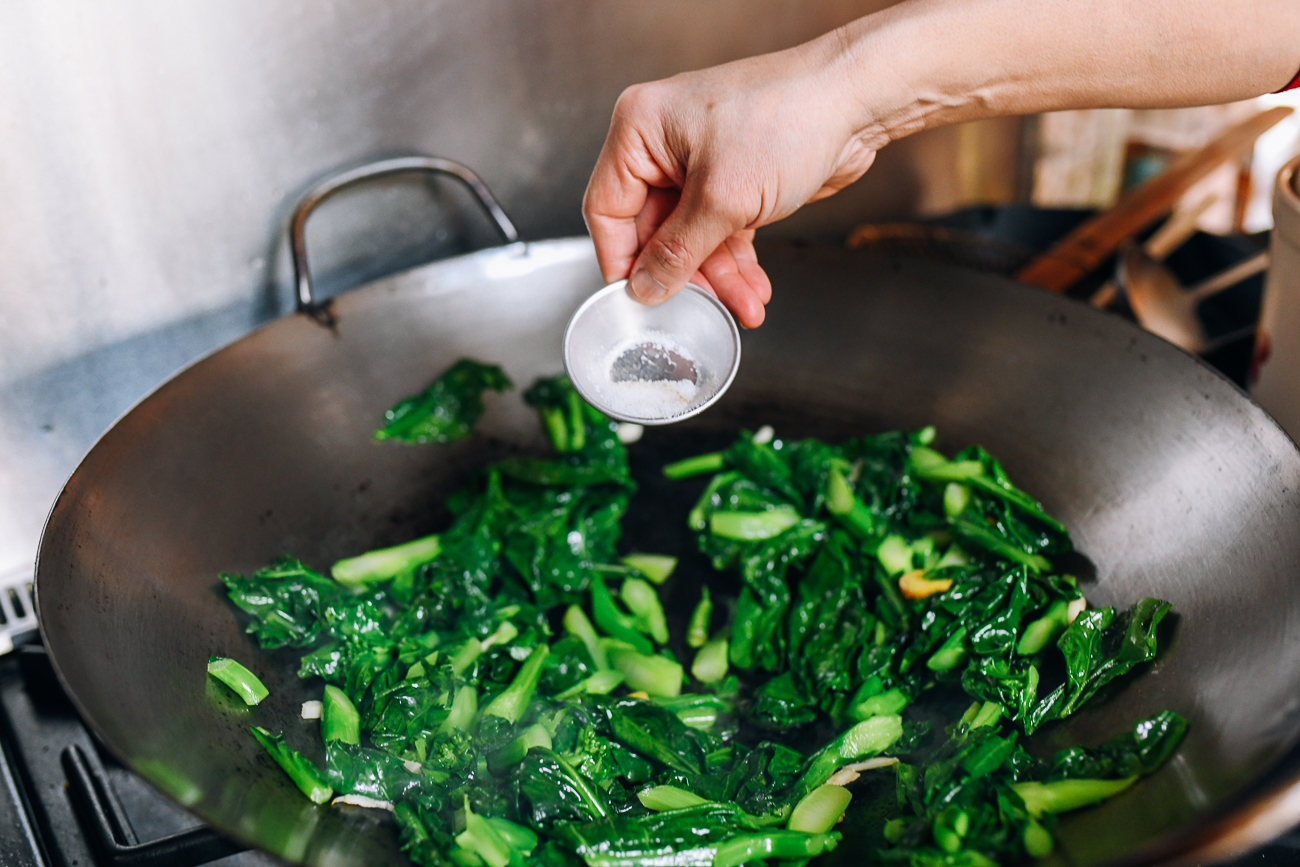
Stir-fry for another 30 seconds, or until the gai lan has reached the desired tenderness. At this point, if the vegetables look too dry, add a splash of hot water or chicken stock.
Serve this as a side dish. Sometimes after a big weekend of indulging in rich foods, I like having this stir-fried Chinese broccoli alone with a plain bowl of rice!
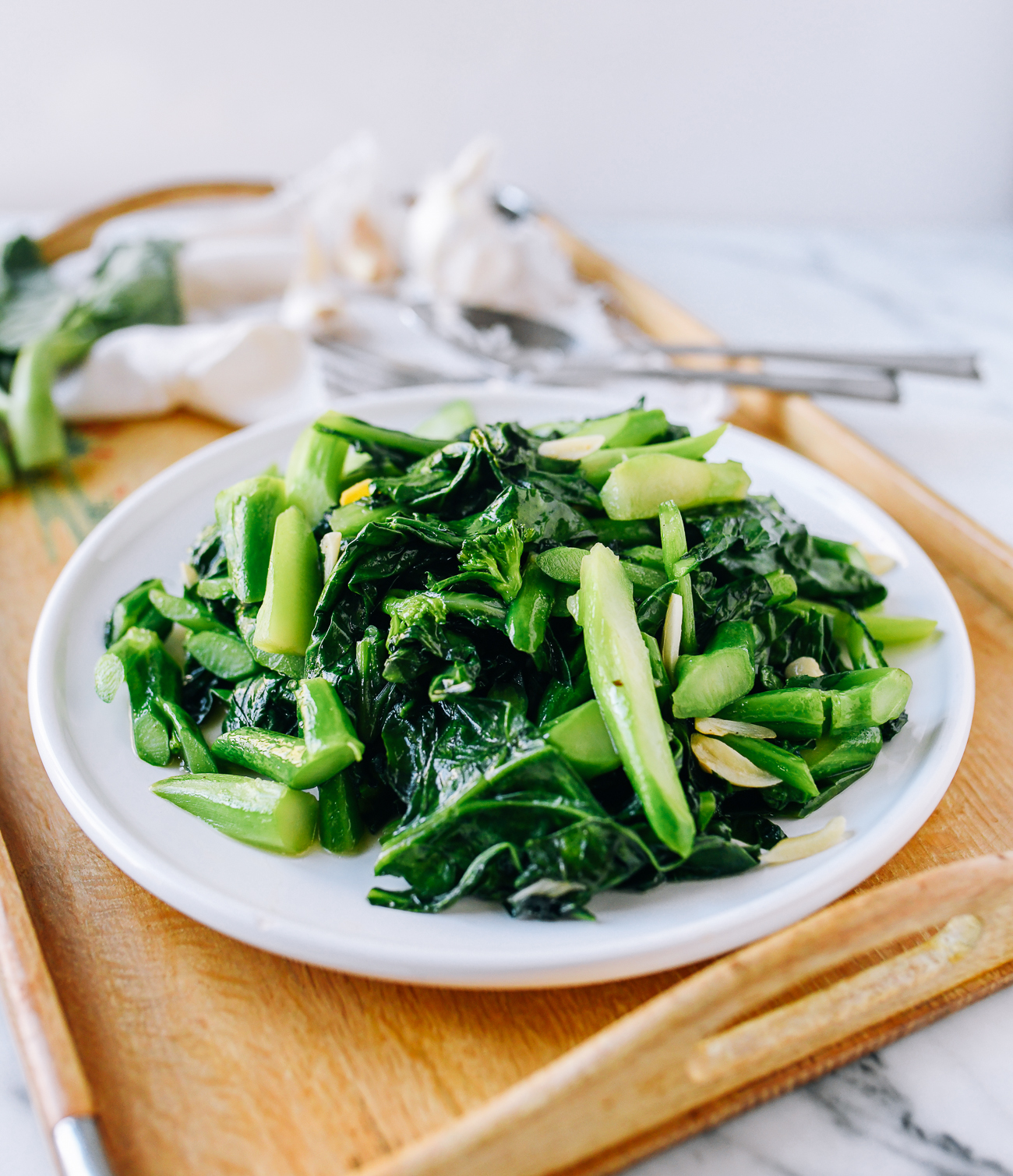
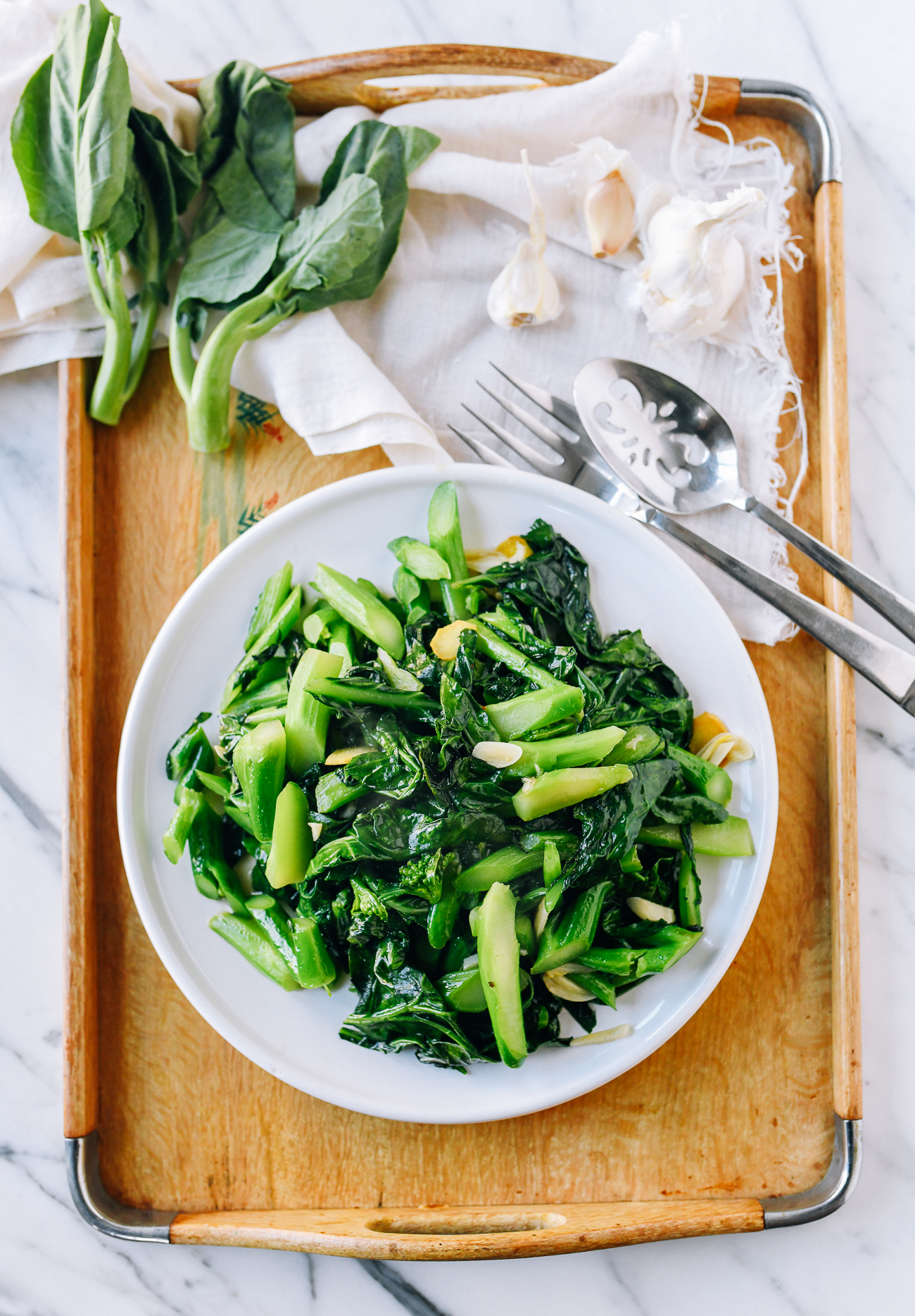
Chinese Broccoli Stir-fry
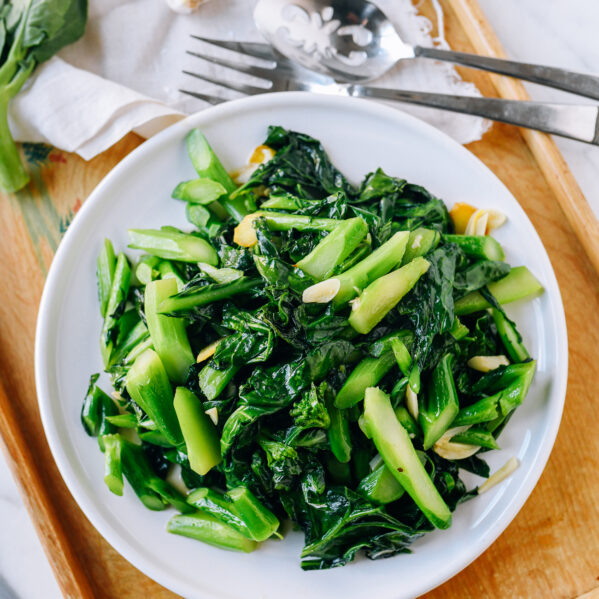
Ingredients
- 1 pound Chinese broccoli (washed thoroughly, ends trimmed and cut at an angle into 2- to 2½-inch pieces)
- 1/2 teaspoon salt
- 1/4 teaspoon sugar
- 1/8 teaspoon ground white pepper
- 1/8 teaspoon MSG or mushroom powder (optional)
- 2 tablespoons oil (any neutral flavored oil, such as vegetable or canola oil)
- 7 slices fresh ginger (thin slices)
- 4 cloves garlic (sliced)
- 1 tablespoon clear rice wine (can also use Shaoxing wine, though clear rice wine yields a cleaner, milder flavor)
Instructions
- First, prepare the Chinese broccoli. Wash them thoroughly in a big bowl of water, agitating the water and rubbing the leaves to loosen any dirt. Then allow them to soak for about 5-10 minutes to allow the dirt/sand to settle at the bottom of the bowl. Repeat twice, for a total of three washings.
- Trim away any tough ends. Larger, thicker gai lan stems can get tough at the bottom of the stalk, so trim a ¼-inch off the ends, and use a paring knife or peeler to remove the outer layer of the bottom stem (which can be too fibrous to eat), similar to what you would do with asparagus. Then slice on a diagonal into 2 to 2 ½ inch pieces.
- If desired, mix the salt, sugar, white pepper, and msg (if using), so you can add them to the vegetables all at once. When you’re stir-frying, you want everything close at hand so you can focus on building wok hei.
- Heat your wok over medium-high until it’s just smoking. Spread the oil around the perimeter of the wok. Add the ginger slices, and cook for 10-15 seconds, or until they’re fragrant and just starting to caramelize (this will happen very quickly if your heat is high enough).
- Add the garlic, followed immediately by the Chinese broccoli. Using a scooping motion, stir-fry with your wok spatula for 10 seconds to coat everything in the oil and evenly distribute the ginger and garlic.
- Increase the heat to high. Add the clear rice wine around the perimeter of the wok.
- Push all of the Chinese broccoli into the middle of the wok in a small pile. Cover the wok for 1 minute. Steam will cook the vegetables, and the sides of your wok should superheat.
- Remove the wok lid. Gripping the wok by the handle, use your spatula to drag the Chinese broccoli around the sides of the wok. This will create a searing, wok hei effect. Next add the salt, sugar, white pepper and msg (if using).
- Stir-fry for another 30 seconds, or until the gai lan has reached the desired tenderness. If the vegetables look too dry at this point, add a splash of hot water or chicken stock. Serve.
